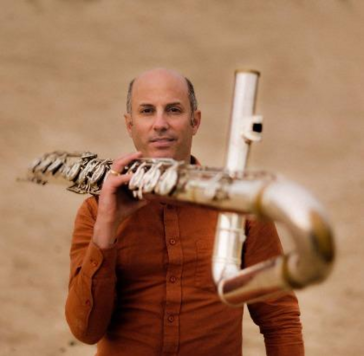“In-Between” is the title of this conference. If I am right, it focuses on the role of the artist as a middle-man, or middle-woman, between art and learner. It focuses, maybe, on the way artists are capable to transfer knowledge, skills, attitudes, insights, emotions of an artistic nature. And it focuses, maybe, on the way experiences from the domain of the arts may be transferred through the mechanism inherent in the domain of education; two domains which sometimes seem to have a rather problematic relation because the arts are seen as a domain of beauty, of expressivity, of individuality, of freedom, of creativity, whereas education is seen as the domain of standardization, of group work, of compliance to rules, and of mastering the existing.

“In-Between” is the title of this conference. If I am right, it focuses on the role of the artist as a middle-man, or middle-woman, between art and learner. It focuses, maybe, on the way artists are capable to transfer knowledge, skills, attitudes, insights, emotions of an artistic nature. And it focuses, maybe, on the way experiences from the domain of the arts may be transferred through the mechanism inherent in the domain of education; two domains which sometimes seem to have a rather problematic relation because the arts are seen as a domain of beauty, of expressivity, of individuality, of freedom, of creativity, whereas education is seen as the domain of standardization, of group work, of compliance to rules, and of mastering the existing.

Students in Higher Music Education (HME) are not facilitated to develop both their artistic and academic musical competences. Conservatoires (professional education, or ‘HBO’) traditionally foster the development of musical craftsmanship, while university musicology departments (academic education, or ‘WO’) promote broader perspectives on music’s place in society. All the while, music professionals are increasingly required to combine musical and scholarly knowledge. Indeed, musicianship is more than performance, and musicology more than reflection—a robust musical practice requires people who are versed in both domains. It’s time our education mirrors this blended profession. This proposal entails collaborative projects between a conservatory and a university in two cities where musical performance and musicology equally thrive: Amsterdam (Conservatory and University of Amsterdam) and Utrecht (HKU Utrechts Conservatorium and Utrecht University). Each project will pilot a joint program of study, combining existing modules with newly developed ones. The feasibility of joint degrees will be explored: a combined bachelor’s degree in Amsterdam; and a combined master’s degree in Utrecht. The full innovation process will be translated to a transferable infrastructural model. For 125 students it will fuse praxis-based musical knowledge and skills, practice-led research and academic training. Beyond this, the partners will also use the Comenius funds as a springboard for collaboration between the two cities to enrich their respective BA and MA programs. In the end, the programme will diversify the educational possibilities for students of music in the Netherlands, and thereby increase their professional opportunities in today’s job market.

This PD project aims to gather new knowledge through artistic and participatory design research within neighbourhoods for possible ways of addressing and understanding the avoidance and numbness caused by feelings of vulnerability, discomfort and pain associated with eco-anxiety and chronic fear of environmental doom. The project will include artistic production and suitable forms of fieldwork. The objectives of the PD are to find answers to the practice problem of society which call for art that sensitises, makes aware and helps initiate behavioural change around the consequences of climate change. Rather than visualize future sea levels directly, it will seek to engage with climate change in a metaphorical and poetic way. Neither a doom nor an overly techno-optimistic scenario seem useful to understand the complexity of flood risk management or the dangers of flooding. By challenging both perspectives with artistic means, this research hopes to counter eco-anxiety and create a sense of open thought and susceptibility to new ideas, feelings and chains of thought. Animation and humour, are possible ingredients. The objective is to find and create multiple Dutch water stories, not just one. To achieve this, it is necessary to develop new methods for selecting and repurposing existing impactful stories and strong images. Citizens and students will be included to do so via fieldwork. In addition, archival materials will be used. Archives serve as a repository for memory recollection and reuse, selecting material from the audiovisual archive of the Institute of Sound & Vision will be a crucial part of the creative work which will include two films and accompanying music.
Microbes like bacteria and fungi can grow on almost everything, including e.g. on a music CD made of aluminum and polycarbonate. How? By producing an optimal mixture of effective enzymes that degrade the material on which the microbes thrive. In this project we want to find and characterize microbes that have the ability to digest one of the most commercially successful but at the same time hard-to-degrade materials: furan-based bio-composite resin. To help the microbes to degrade this recalcitrant material, we first must open up the complex resin structure by using (mild) acidification, grinding, and/or UV light. Thus, with this project we aim to find an effective and sustainable way to safely and effectively dispose and recycle used bio-composite resins. Our findings will help to increase the circularity of bio-composite materials and as such decrease the environmental waste pressure.